Volume 18, Issue 2
Displaying 1-17 of 17 articles from this issue
- |<
- <
- 1
- >
- >|
Review
-
2005Volume 18Issue 2 Pages 81-84
Published: November 15, 2005
Released on J-STAGE: November 06, 2007
Download PDF (313K)
Original Article
-
2005Volume 18Issue 2 Pages 85-89
Published: November 15, 2005
Released on J-STAGE: November 06, 2007
Download PDF (310K) -
2005Volume 18Issue 2 Pages 91-96
Published: November 15, 2005
Released on J-STAGE: November 06, 2007
Download PDF (398K) -
2005Volume 18Issue 2 Pages 97-100
Published: November 15, 2005
Released on J-STAGE: November 06, 2007
Download PDF (316K) -
2005Volume 18Issue 2 Pages 101-104
Published: November 15, 2005
Released on J-STAGE: November 06, 2007
Download PDF (247K) -
2005Volume 18Issue 2 Pages 105-109
Published: November 15, 2005
Released on J-STAGE: November 06, 2007
Download PDF (346K)
Case Report
-
2005Volume 18Issue 2 Pages 111-115
Published: November 15, 2005
Released on J-STAGE: November 06, 2007
Download PDF (460K) -
2005Volume 18Issue 2 Pages 117-121
Published: November 15, 2005
Released on J-STAGE: November 06, 2007
Download PDF (446K) -
2005Volume 18Issue 2 Pages 123-126
Published: November 15, 2005
Released on J-STAGE: November 06, 2007
Download PDF (313K) -
2005Volume 18Issue 2 Pages 127-130
Published: November 15, 2005
Released on J-STAGE: November 06, 2007
Download PDF (330K) -
2005Volume 18Issue 2 Pages 131-135
Published: November 15, 2005
Released on J-STAGE: November 06, 2007
Download PDF (410K) -
2005Volume 18Issue 2 Pages 137-139
Published: November 15, 2005
Released on J-STAGE: November 06, 2007
Download PDF (306K) -
2005Volume 18Issue 2 Pages 141-145
Published: November 15, 2005
Released on J-STAGE: November 06, 2007
Download PDF (318K) -
2005Volume 18Issue 2 Pages 147-151
Published: November 15, 2005
Released on J-STAGE: November 06, 2007
Download PDF (399K)
Introduction article of overseas papers
-
2005Volume 18Issue 2 Pages 153-155
Published: November 15, 2005
Released on J-STAGE: November 06, 2007
Download PDF (200K) -
2005Volume 18Issue 2 Pages 156-157
Published: November 15, 2005
Released on J-STAGE: November 06, 2007
Download PDF (161K) -
2005Volume 18Issue 2 Pages 158-160
Published: November 15, 2005
Released on J-STAGE: November 06, 2007
Download PDF (247K)
- |<
- <
- 1
- >
- >|
